Sinuo Liu
New Trends for Modern Machine Translation with Large Reasoning Models
Mar 13, 2025Abstract:Recent advances in Large Reasoning Models (LRMs), particularly those leveraging Chain-of-Thought reasoning (CoT), have opened brand new possibility for Machine Translation (MT). This position paper argues that LRMs substantially transformed traditional neural MT as well as LLMs-based MT paradigms by reframing translation as a dynamic reasoning task that requires contextual, cultural, and linguistic understanding and reasoning. We identify three foundational shifts: 1) contextual coherence, where LRMs resolve ambiguities and preserve discourse structure through explicit reasoning over cross-sentence and complex context or even lack of context; 2) cultural intentionality, enabling models to adapt outputs by inferring speaker intent, audience expectations, and socio-linguistic norms; 3) self-reflection, LRMs can perform self-reflection during the inference time to correct the potential errors in translation especially extremely noisy cases, showing better robustness compared to simply mapping X->Y translation. We explore various scenarios in translation including stylized translation, document-level translation and multimodal translation by showcasing empirical examples that demonstrate the superiority of LRMs in translation. We also identify several interesting phenomenons for LRMs for MT including auto-pivot translation as well as the critical challenges such as over-localisation in translation and inference efficiency. In conclusion, we think that LRMs redefine translation systems not merely as text converters but as multilingual cognitive agents capable of reasoning about meaning beyond the text. This paradigm shift reminds us to think of problems in translation beyond traditional translation scenarios in a much broader context with LRMs - what we can achieve on top of it.
An End-to-End Model for Photo-Sharing Multi-modal Dialogue Generation
Aug 16, 2024



Abstract:Photo-Sharing Multi-modal dialogue generation requires a dialogue agent not only to generate text responses but also to share photos at the proper moment. Using image text caption as the bridge, a pipeline model integrates an image caption model, a text generation model, and an image generation model to handle this complex multi-modal task. However, representing the images with text captions may loss important visual details and information and cause error propagation in the complex dialogue system. Besides, the pipeline model isolates the three models separately because discrete image text captions hinder end-to-end gradient propagation. We propose the first end-to-end model for photo-sharing multi-modal dialogue generation, which integrates an image perceptron and an image generator with a large language model. The large language model employs the Q-Former to perceive visual images in the input end. For image generation in the output end, we propose a dynamic vocabulary transformation matrix and use straight-through and gumbel-softmax techniques to align the large language model and stable diffusion model and achieve end-to-end gradient propagation. We perform experiments on PhotoChat and DialogCC datasets to evaluate our end-to-end model. Compared with pipeline models, the end-to-end model gains state-of-the-art performances on various metrics of text and image generation. More analysis experiments also verify the effectiveness of the end-to-end model for photo-sharing multi-modal dialogue generation.
SHREC 2021: Classification in cryo-electron tomograms
Mar 18, 2022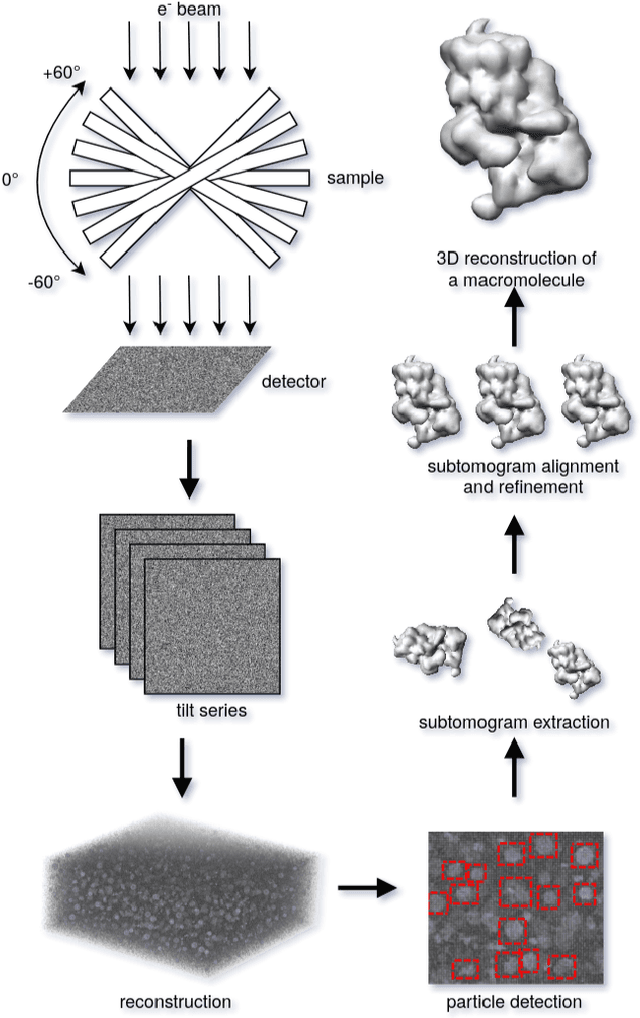
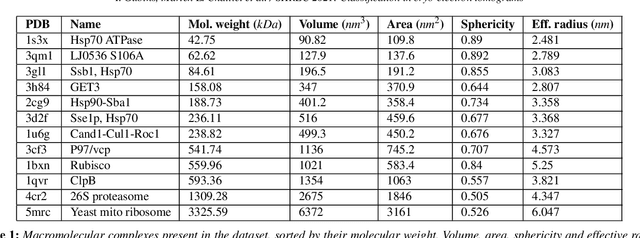
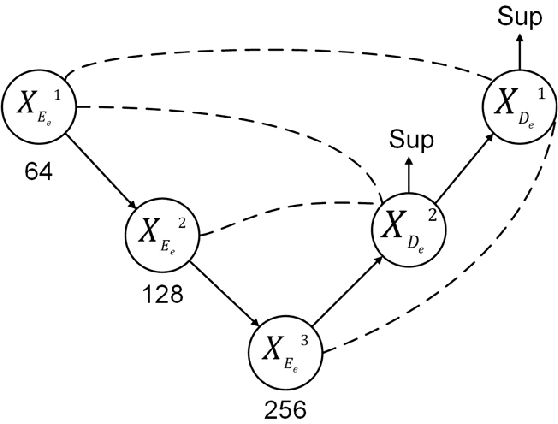
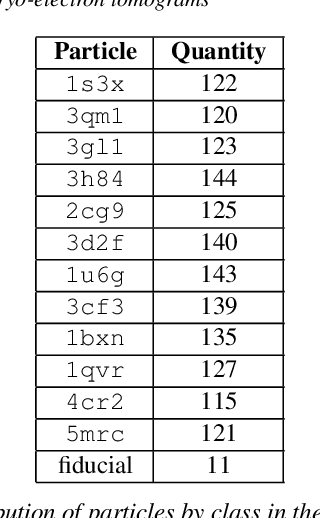
Abstract:Cryo-electron tomography (cryo-ET) is an imaging technique that allows three-dimensional visualization of macro-molecular assemblies under near-native conditions. Cryo-ET comes with a number of challenges, mainly low signal-to-noise and inability to obtain images from all angles. Computational methods are key to analyze cryo-electron tomograms. To promote innovation in computational methods, we generate a novel simulated dataset to benchmark different methods of localization and classification of biological macromolecules in tomograms. Our publicly available dataset contains ten tomographic reconstructions of simulated cell-like volumes. Each volume contains twelve different types of complexes, varying in size, function and structure. In this paper, we have evaluated seven different methods of finding and classifying proteins. Seven research groups present results obtained with learning-based methods and trained on the simulated dataset, as well as a baseline template matching (TM), a traditional method widely used in cryo-ET research. We show that learning-based approaches can achieve notably better localization and classification performance than TM. We also experimentally confirm that there is a negative relationship between particle size and performance for all methods.
Cryo-shift: Reducing domain shift in cryo-electron subtomograms with unsupervised domain adaptation and randomization
Nov 17, 2021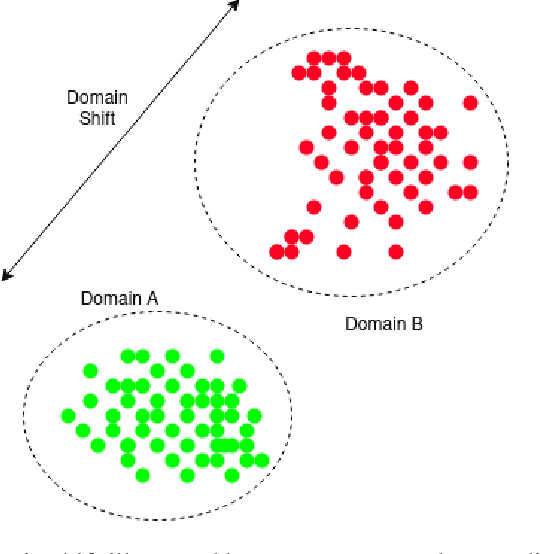

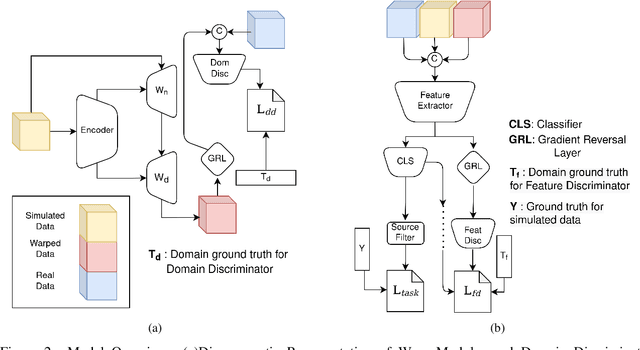

Abstract:Cryo-Electron Tomography (cryo-ET) is a 3D imaging technology that enables the visualization of subcellular structures in situ at near-atomic resolution. Cellular cryo-ET images help in resolving the structures of macromolecules and determining their spatial relationship in a single cell, which has broad significance in cell and structural biology. Subtomogram classification and recognition constitute a primary step in the systematic recovery of these macromolecular structures. Supervised deep learning methods have been proven to be highly accurate and efficient for subtomogram classification, but suffer from limited applicability due to scarcity of annotated data. While generating simulated data for training supervised models is a potential solution, a sizeable difference in the image intensity distribution in generated data as compared to real experimental data will cause the trained models to perform poorly in predicting classes on real subtomograms. In this work, we present Cryo-Shift, a fully unsupervised domain adaptation and randomization framework for deep learning-based cross-domain subtomogram classification. We use unsupervised multi-adversarial domain adaption to reduce the domain shift between features of simulated and experimental data. We develop a network-driven domain randomization procedure with `warp' modules to alter the simulated data and help the classifier generalize better on experimental data. We do not use any labeled experimental data to train our model, whereas some of the existing alternative approaches require labeled experimental samples for cross-domain classification. Nevertheless, Cryo-Shift outperforms the existing alternative approaches in cross-domain subtomogram classification in extensive evaluation studies demonstrated herein using both simulated and experimental data.
* 14 pages
 Add to Chrome
Add to Chrome Add to Firefox
Add to Firefox Add to Edge
Add to Edge